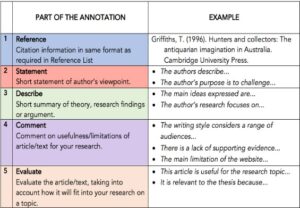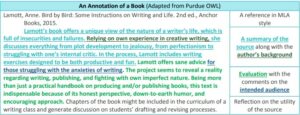Your Ultimate Guide: How to Write an Annotated Bibliography in 5 Simple Steps

How to Write an Annotated Bibliography
Welcome to our blog “Your Ultimate Guide: How to Write an Annotated Bibliography in 5 Simple Steps.” Whether you’re a student embarking on a research project or an academic looking to enhance your scholarly work, mastering the art of creating an annotated bibliography is an essential skill. This guide is your comprehensive resource to demystify the process and empower you with a clear, concise, and effective approach.
An annotated bibliography is more than just a list of sources. It’s a strategic compilation of references accompanied by concise summaries that highlight the relevance, credibility, and contribution of each source to your research topic. While the task might seem daunting at first, breaking it down into five straightforward steps will transform it into a manageable and even enjoyable endeavor.
Throughout this guide, we’ll walk you through the process of crafting an impeccable annotated bibliography. From selecting the right sources to crafting concise summaries, we’ve got you covered. By the end of these five steps, you’ll not only have a polished annotated bibliography but also a deeper understanding of your research landscape.
So, whether you’re a newcomer to the world of annotated bibliographies or looking to refine your existing skills, let’s dive into the step-by-step journey of creating a well-structured and informative annotated bibliography that will elevate the quality of your research projects. Let’s get started on your path to becoming an annotated bibliography expert.
Annotated Bibliography Definition
An annotated bibliography is a structured list of sources, such as books, articles, websites, or other materials, that are relevant to a particular topic or research question.
Each entry in the annotated bibliography includes a concise summary or description of the resource, along with an evaluation of its relevance, quality, and applicability to the research project.
The primary purpose of an annotated bibliography is to provide a comprehensive overview of the available literature on a specific subject while also offering insights into the sources’ strengths and weaknesses.
When learning how to write an annotated bibliography, it’s essential to follow a consistent format. Each entry typically consists of three parts: the citation of the source following a specific citation style (like APA, MLA, Harvard, Chicago, etc.), a summary of the sources’ main arguments or content, and a critical evaluation that assesses the source’s credibility, objectivity, and potential biases. This critical evaluation aids researchers in determining whether a source is suitable for their research needs and helps them synthesize the information correctly.
A Step-by-Step Guide on How to Write an Annotated Bibliography
Step 1: Define Your Purpose and Scope
Before you start gathering sources, it’s crucial to define the purpose and scope of your annotated bibliography. Are you conducting research for an academic research paper, a presentation, or a project? Clearly understanding your goals will help you choose the most relevant sources and determine the depth of your annotations.
Actionable Tips
- Clearly articulate the focus of your research to narrow down your scope.
- Identify the type of sources you need: Scholarly articles, books, websites, etc.
- Determine the number of sources required and any specific guidelines from your instructor.
Step 2: Gather High-Quality Sources
The foundation of a robust annotated bibliography lies in the quality of your sources. Seek out authoritative and credible materials that directly contribute to your research topic. Academic databases, library catalogs, and reputable websites can be valuable resources for finding reliable information.
Actionable Tips
- Use keywords related to your research topic to search for relevant sources.
- Check the credibility of the author, publication, and source before including them.
- Utilize academic databases and citation managers to organize your sources efficiently.
Step 3: Create Succinct Annotations
Annotations provide a concise summary of each source and its relevance to your research. While the exact length may vary, aim for around 150 words per annotation. In these annotations, briefly summarize the main points, methodology, and findings of the source, and explain how it contributes to your research.
Actionable Tips
- Begin with a brief citation in the chosen citation style (APA, MLA, Chicago, etc.).
- Summarize the sources’ main arguments, methodologies, and conclusions.
- Address how the source fits into your research context and supports your thesis.
Step 4: Craft an Organized Structure
A well-structured annotated bibliography enhances the clarity and coherence of your research. Organize your sources alphabetically by the author’s last name or chronologically of your research benefits from that arrangement. Consistency in formatting and citation style is crucial for presenting a polished bibliography.
Actionable Tips
- Follow the citation style guide consistently throughout your annotations.
- Use a consistent format for headings, such as bold or italics, for ease of navigation.
- Group sources thematically or categorically to provide a logical flow.
Step 5: Review, Revise, and Proofread
Before finalizing your annotated bibliography, take the time to review and revise your annotations. Check for accuracy in citations, ensure clarity in your summaries, and verify the alignment of each source with your research goals. Proofreading for grammar and punctuation errors is also essential for maintaining professionalism.
Actionable Tips
- Proofread each annotation for grammatical and typographical errors.
- Verify that your annotations accurately reflect the content of the sources.
- Double-check citation details, including author’s names, publication dates, and titles.
Annotated Bibliography Outline
Here’s a brief outline of an annotated bibliography entry:
- Source: Provide a correctly formatted citation of the source.
- Summary: Write a concise summary of the source’s main points, arguments, and findings.
- Evaluation: Assess the source’s credibility, reliability, and relevance to your research. Consider the author’s expertise, the publication’s reputation, and any potential biases.
- Applicability: Explain how this source contributes to your research. Discuss its potential for supporting your thesis, offering counterarguments, or providing context.
Below is an example of an annotated bibliography entry.

An Annotated Bibliography Example
Wrap-Up
In summary, mastering the art of how to write an annotated bibliography doesn’t have to be a daunting task. By following the five simple steps outlined in this guide, you now have a solid foundation to craft comprehensive and insightful annotated bibliographies for your academic and research projects. Remember, an annotated bibliography not only showcases your ability to curate high-quality sources but also demonstrates your understanding of their relevance to your research objectives.
As you continue your scholarly journey, keep in mind that practice and refinement are key. Each annotated bibliography you create will contribute to your skills and expertise, enabling you to showcase your research more compellingly and professionally.
If you find yourself pressed for time or seeking expert assistance in crafting impeccable annotated bibliographies, consider utilizing the writing services offered by Specialessay Help. At Specialessay Help, we have a team of experienced and dedicated professionals ready to guide you through the process, ensuring your annotated bibliography meets the highest standards of quality, accuracy, and academic integrity. With Specialessay Help’s support, you can focus on your research and academic pursuits, confident that your annotated bibliography is in capable hands.
So, whether you’re a student, researcher, or academic professional, remember that a well-structured annotated bibliography is a valuable tool in your arsenal. It not only enhances the credibility of your work but also showcases your dedication to thorough research and informed analysis. Now armed with this guide and the support of Specialessay Help, you’re ready to embark on your scholarly endeavors with confidence and finesse.




